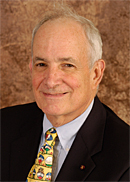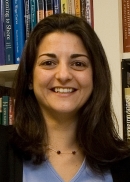Photo above: An automated mesocosm called the Red Sea Simulator that will be used by Dr. Karine Kleinhaus for her NSF-funded project.
The end of classes at the School of Marine and Atmospheric Sciences is when research projects kick into full gear. Here are some of the recent research grants awarded to our faculty.
Congratulations to Ellen Pikitch and co-PI Chris Gobler, who have received a new research award from the Pew Charitable Trust, for a project entitled “Contract to Support New York State Shellfish Management and Recovery“, with a project period of 4/30/20 – 12/31/20, in the amount $75,000
The purpose of this project is to support efforts to create a New York State shellfish management and recovery plan to sustain and enhance marine shellfish populations statewide and to provide recommendations for plan implementation. The scope of the plan will include commercial management of shellfish fisheries, aquaculture and shellfish restoration for ecosystem services. Stony Brook researchers will coordinate and participate in a kick-off workshop that will be held on the Stony Brook campus (if possible) and will include key influencers such as state officials, scientists, fishermen, shellfish farmers, NGOs, municipalities and other stakeholders. Project staff will prepare needed background information for the workshop through a literature review and direct communication with key stakeholders.
A report of the workshop focused on recommendations and next steps will be distributed to workshop participants and also disseminated widely.
 Congratulations to Larry Swanson, and co-PIs Kaitlin Giglio, Charlie Flagg, and Tom Wilson, on their new award from the Town of Smithtown, in support of their project, “Nissequogue High Water Line Determination” in the amount $148,642, for the project period 1/1/20 – 4/30/21
Congratulations to Larry Swanson, and co-PIs Kaitlin Giglio, Charlie Flagg, and Tom Wilson, on their new award from the Town of Smithtown, in support of their project, “Nissequogue High Water Line Determination” in the amount $148,642, for the project period 1/1/20 – 4/30/21
As a consequence of sea level rise, the accelerating rate of bluff recession, and the propensity of land owners to harden the toe of steep bluffs, the Town of Smithtown has commissioned the PIs to ascertain the elevation of a number of tidal datums—most importantly the mean high water line (MHWL). The MHWL delineates the boundary between public and private ownership. It, along with the Mean Low Water Line, Mean Lower Low Water Line, Mean Sea Level will be determined to national charting standards using tidal observations from Stony Brook Harbor, the Nissequogue River, and Long Island Sound. The MHWL will be marked along the beach between Stony Brook Harbor and the Nissequogue River and will be delineated on Town maps and charts.
Congratulations to Karine Kleinhaus, who has been awarded a new research grant jointly from the National Science Foundation and the American Israel Binational Science Foundation for a project entitled “Can Reef-Building Corals Bypass Aging? ” The one-year project will be completed in collaboration with her colleagues at the InterUniveristy Institute for Marine Sciences in Eilat, Israel and at Rutgers University’s Center of Human Development and Aging. The total grant is in the amount $170,000.
American Israel Binational Science Foundation for a project entitled “Can Reef-Building Corals Bypass Aging? ” The one-year project will be completed in collaboration with her colleagues at the InterUniveristy Institute for Marine Sciences in Eilat, Israel and at Rutgers University’s Center of Human Development and Aging. The total grant is in the amount $170,000.
Unusually rapid tissue regeneration is occurring in massive corals damaged by a rare extratropical cyclone in the Gulf of Aqaba. Addressing questions about whether colonial colonies are truly immortal, this project will study recently regenerated coral tissue using a unique automated mesocosm and advanced molecular tools to determine if: 1) a coral polyp’s chronological age is linked to telomere length, an established biomarker and central mechanism of cellular aging; and 2) the chronological age of corals affects basic physiological functions such as growth, metabolic rate and reproduction. An incoming MCP student will be selected to conduct their capstone on coral senescence and to join Karine in Eilat to participate in experiments and in science communication work about the project and findings.
Karine Kleinhaus was also awarded a grant from the European Union’s ASSEMBLE Plus titled “Coral Steroids and Gametogenesis: Is there a link?” ASSEMBLE Plus is a program headed by the European Marine Biological Resource Centre (EMBRC). The goal of the program is to “stimulate fundamental and applied research excellence in Europe in the fields of marine biology and ecology, thereby improving the knowledge- and technology-base for the European bio-economy, policy shaping and education.” The award will support a research study she is conducting with colleagues at the InterUniversity Institute of Marine Sciences in Eilat, Israel, which is one of the marine installations included in the European consortium.
 Congratulations to Roxanne Karimi, who has been awarded a new grant, from Lake Champlain Sea Grant, in support of the project: “Assessing Winter Mercury Patterns in Lake Champlain Basins“. The award is for $107,207 for two years, with a project start date of May 2, 2020. Roxanne has a Co-I, Andrew Schroth, Department of Geology, UVM.
Congratulations to Roxanne Karimi, who has been awarded a new grant, from Lake Champlain Sea Grant, in support of the project: “Assessing Winter Mercury Patterns in Lake Champlain Basins“. The award is for $107,207 for two years, with a project start date of May 2, 2020. Roxanne has a Co-I, Andrew Schroth, Department of Geology, UVM.
This study aims to understand mercury bioavailability, bioaccumulation and transfer through the lake food web during the winter in Lake Champlain basins compared to other seasons. This project uses a combination of field studies, quantitative modeling, and outreach to understand how mercury transfers through the food chain throughout the year, specifically during the winter compared to other seasons, and how predicted changes in climate and lake winter conditions may alter mercury transfer through the food chain, fish mercury levels, and human exposure from eating fish. Results from this project will help provide the information necessary to predict changes in fish Hg levels and safety for human consumption and inform monitoring plans and fish advisory policies.
Congratulations to Hyemi Kim, who has been awarded a contract with the Korean NIST, in support of her project titled “Impact of the Coupled Initialization on Subseasonal Forecast“, for the period 1/1/2020 – 12/31/2020, in the amount of $45,190.
 The main purpose of this research project is to understand the impact of the ocean-land-atmosphere coupled initialization of subseasonal forecasts. The research team led by Hyemi Kim at Stony Brook University has developed subseasonal prediction evaluation metrics in year 1 and year 2 and will apply these metrics to the newly developed coupled initialization reforecast experiments. Further, multi-model reforecasts from the internationally collaborated projects, such as the S2S and SubX, will be compared. Especially the KMA GloSea5 hindcasts will be evaluated regarding its predictability of tropical subseasonal variability.
The main purpose of this research project is to understand the impact of the ocean-land-atmosphere coupled initialization of subseasonal forecasts. The research team led by Hyemi Kim at Stony Brook University has developed subseasonal prediction evaluation metrics in year 1 and year 2 and will apply these metrics to the newly developed coupled initialization reforecast experiments. Further, multi-model reforecasts from the internationally collaborated projects, such as the S2S and SubX, will be compared. Especially the KMA GloSea5 hindcasts will be evaluated regarding its predictability of tropical subseasonal variability.





You must be logged in to post a comment.